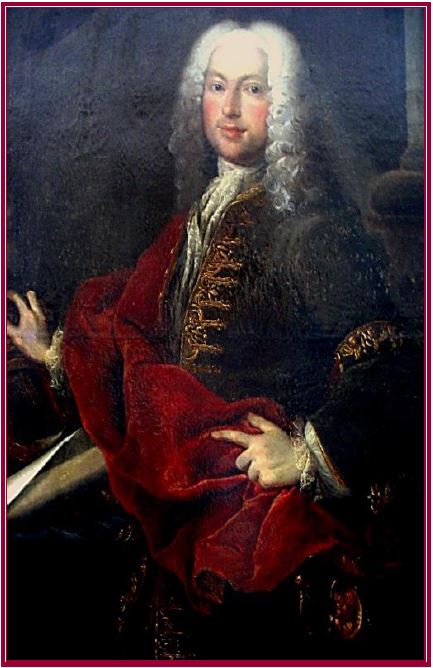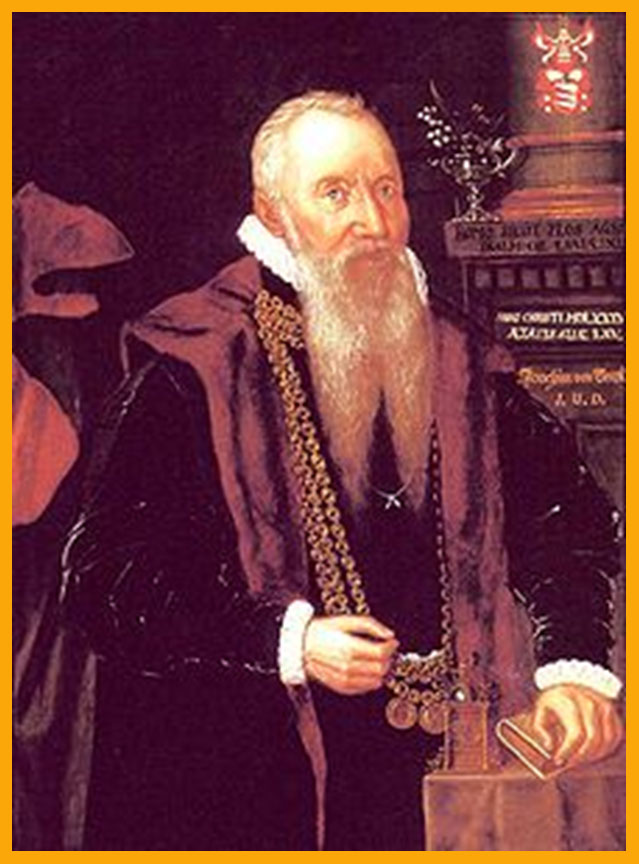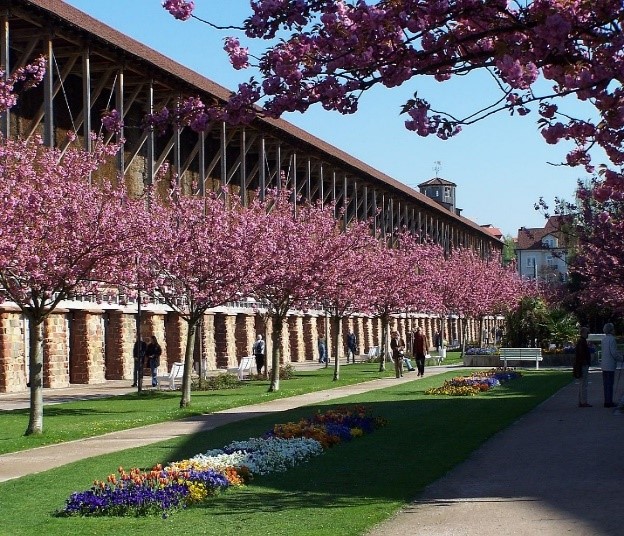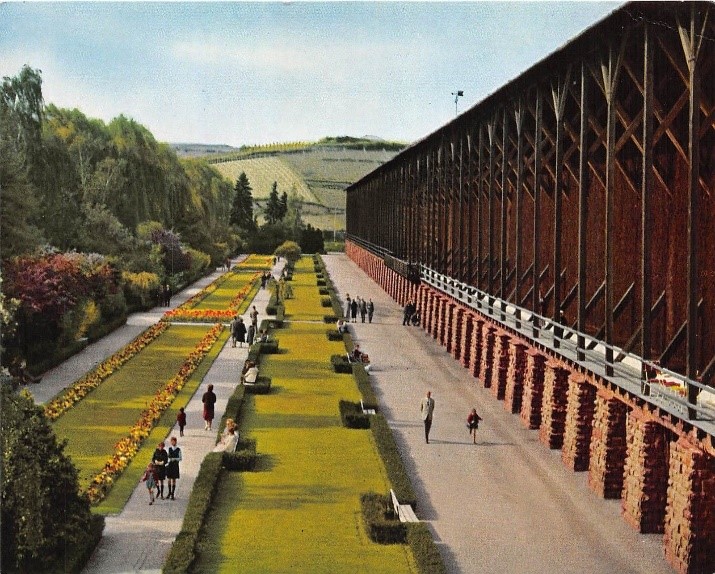The Christlieb-Chrislip-Crislip Family Association Archives
Here, will be kept various presentations and other archival materials pertaining to the Christlieb-Chrislip-Crislip Family Association.
Baron Joachim Friedrich III von Beust
1697–1771
Highborn Witness at Friedrich Carl Christlieb's Baptism and Conversion
May 20, 1742
This paper was presented by Ned Crislip at the Eighteenth Biennial Reunion of the Christlieb-Chrislip-Crislip Family Association, in Buckhannon, West Virginia.
Baron von Beust, Highborn Witness at
Friedrich Carl Christlieb's Baptism
and Conversion
Until recently, other than his position as Director of the Salt Distillery at Dürkheim, very little in the way of background was known about Baron von Beust who witnessed Friedrich Carl Christlieb’s baptism and conversion, on May 20, 1742. Thanks to the Internet, we have been able to piece together further details regarding this luminary.
Before going forward, the following may be helpful for those unfamiliar with our family’s pre-American history, to hear the following from our 2013 publication, Ancestors and Descendants of Friedrich Carl and Anna Catharina Christlieb:
“As far back as the 12th century, salt had been extracted from the numerous salt springs in the area. One of the most productive was near the Cloister at Schönfeld. After the monastery was dissolved, Elector Friedrich IV, built a saltworks on the spot in 1595; however, all had fallen apart by the end of the Thirty-Years’ War. In 1716, a new salt refinery was constructed on the ancient site. The refinery at Schönfeld reportedly took five water wheels to drive the pumps that brought the brine out of the spring and into the six refineries. Known as Philippshall, i.e. Philipp’s Salt, the saltworks was named for Prince Carl Philipp III, Elector of the Lower Palatinate.”
“At some point in the early 18th century, the management of the salt distillery was handed over to the Baron of Beust from Saxony, who carried the distinguished title, “Lord Privy Chamberlain von Beusten.” Baron von Beust was a witness at the baptism of Gottfried and Anna Catharina’s daughter, Johanna Susanna Elizabetha Bock. His distinguished presence is a positive indication that Gottfried Bock’s position, as salt weigher/auditor at the refinery was well respected.”
“Baron von Beust was also present at Simon aus Frankenstein’s conversion to Christianity. In Friedrich Carl’s baptismal entry, he is referred to as “The Royal Danish and Electoral Palatine Privy Councilor and Baronial Excellency, the Salt-Distillery Director.” The presence of Baron von Beust adds credence to the belief that Simon was also employed at the saltworks.”
“It is known that at the time of Friedrich Carl’s conversion, the salt distillery was fully operational and profitable. To ensure these profits, an order was issued declaring Dürkheimer salt as the national salt. Its quality was said to be superior to all other salt in Germany and better than salt imported from Holland. All officials and subordinates were obligated to order salt only from the Dürkheim salt distillery. Any transgressions to this decree met with harsh penalties. In 1724, the Palatine levied a salt tax that brought in 32,000 Gulden annually. Salt could only be ordered by vendors commissioned from Dürkheim, and all sales had to be registered in salt books. Salt auditors saw to it that everything was handled properly.

Baron Joachim Friedrich von Beust
1697–1771

Ancestor, Professor Joachim von Beust (1522–1557)
At Wittenberg
University. He was a follower of Martin Luther.
“Refining the precious commodity was carried out in a specific fashion, requiring an evaporation process that took thirteen days to complete. The process also required a tremendous amount of firewood. It was recorded that, in 1742, the saltworks management made a wood supply contract with the city in which 50,000 cords of wood could be cut from the Limburg-Dürkheim forest.”
“Employment at the saltworks may have figured into Simon’s conversion to Christianity, as it was obviously the most desirable place to work in the community. If Friedrich Carl was indeed the independent character he is reported to have been, his ambition may have driven him to change his religion in order to be employed in the business of salt making, perhaps with sufficient income to allow him to live in Dürkheim. ” Ancestors and Descendants of Friedrich Carl and Anna Catharina Christlieb, pp. 10-11.
Family historian, Benjamin Franklin Christlieb, preserved the family’s oral tradition when he wrote:
"Both Frederick Charles and his half-brother, George Buck, described places and circumstances existing in Germany during their residence there, alluding to a saltworks near or at Dürkheim and to forests on mountains near that city from which indigent people were permitted to carry bundles of dead limbs or portions of trees to the city to sell as fuel [for the fires of the salt distillery?], by which gatherers eked out a slender livelihood. They described a depressed or impoverished condition of a large portion of the population of Germany, requiring frugality even on the part of those of considerable means as well as the indigent, a condition which may have resulted from the ravages of the frequent wars which the Palatine of the Rhine had its share, which drove many Germans to seek asylum in … the New World.” The Christlieb Family, pp. 8-9.
Taking into consideration the poor economic conditions of the time, it is highly unlikely that a Jew would have been given employment at the salt distillery. However, with his baptism/conversion endorsed by the Count of Leiningen and the Director of the salt distillery, it would not be unreasonable to assume that the saltworks would have been Friedrich Carl’s place of employment.
Joachim Friedrich Constantin von Beust – His Name, Family History, and Titles
All accounts report that Joachim Friedrich Constantin von Beust was born in 1697 in Weimar, Saxony, and that he died there in 1771, at age 74.
Joachim Friedrich Constantin von Beust was a descendant of an old German Markgraf aristocracy. Documented for the first time in 1228, as Bust, the name had, by the 15th century, through the natural process of sound shifts, morphed into Beust. A Markgraf, was one to whom the Holy Roman Emperor had conferred areas of borders to look after. The Markgraf would have to protect the people in the region from invaders, and at the same time protect the Empire. A Markgraf ranked higher than a Count. As the Middle Ages ended and Europe and the Holy Roman Empire became more secure, the military importance of the Markgrafs became less and less. So, in time, Markgraf descendants would maintain the title as a rank of importance, even if they were no longer any part of a reigning family.
The inclusion of von, (meaning from or of) in titles indicates association with nobility, as it is followed by the name of a region over which the nobleman had control.
Joachim Friedrich von Beust III (1697–1771) was the son of Joachim Friedrich von Beust II (1661–1741) and the grandson of Joachim Friedrich von Beust I (1650–1680). Within these generations of this German family can be found various titles: Graf, (Count); Markgraf (Count of Higher Rank); Herzog (Duke); and Freiherr (Baron). Throughout the German states, these honorific titles were retained among non-reigning noblemen. Joachim Friedrich, who witnessed Friedrich Carl Christlieb’s baptism and conversion ceremonies, bore the titles, Baron of Beust and Duke of Saxony. As mentioned in Friedrich Carl’s baptismal entry, he was also a member of Prince Carl Philipp III’s Privy Council, where he was entitled Emissary to the Royal Danish Privy Council.
Joachim Friedrich von Beust’s given names, Joachim and Friedrich were from his father and grandfather. The name, Constantin, which harkens back to Rome’s first Christian Emperor, is both a male given name as well as a surname. In the case of this individual, it is yet to be determined if Constantin was the family’s surname.
Upon the death of his father, Johann Friedrich III, inherited his father’s positions and titles, and was named Freiherren von Beust zu Sachsen/Baron of Beust of Saxony. Four years after his death, in 1771, his younger brother, Carl Leopold, was named Feichsgraf von Beust zu Sachsen/Imperial Count of Beust from Saxony. This title would have been granted or recognized by the Emperor of the Holy Roman Empire.
Regarding the Holy Roman Empire
For sure, whatever supremacy the various titled members of the von Beust family had enjoyed came to an end as a result of the Napoleonic Wars that brought an end to The Holy Roman Empire, in 1806, which by this point in time had ceased to exist as a military body or a political state. In the years following the Thirty-Years’ War (1619–1648) its authority declined to the point that it eventually became a ceremonial title. It was not, however, abolished until 1806 by the Federation of the Rhine, abolished in fear that Napoleon might claim the title for himself.
Before continuing on, I would like to mention, that the Holy Roman Empire did not end for more than 60 years after Friedrich Carl Christlieb’s conversion to Christianity. Therefore, it seems that Joachim Friedrich von Beust’s titles would have been more than honorific; for example, his being appointed as Emissary to Denmark by Prince Elector Carl Philipp III, a position that would require travel and expense on the part of the Prince, who included him as a member of his own Privy Council.
Joachim Friedrich von Beust III
Salinest—Entrepreneur
Baron von Beust, as his name appeared in Friedrich Carl Christlieb’s baptismal entry at Dürkheim, was 46 years old when he witnessed the ceremony. Being a man of middle age, he had attained prominence as an entrepreneur in the business of salt production; namely in the Salinental Valley, where the Nahe River winds through an impressive chain of rock and salt springs.
The following is from an unidentified Saline Valley brochure:
“The Nahe valley has numerous salt springs. The brine has a salt content of around 1.5% and for 270 years salt was extracted from it. The extraction process required the salt content in the brine to be increased to 26%, and the graduation walls were a vital step in this process. In the 18th century, Baron von Beust invented the salt extraction process involving brine trickling down through blackthorn brushwood stacked in large frames (graduation walls), which resulted in the salt content being increased by natural evaporation. Using waterwheels, the brine was pumped seven times to the top of these graduation walls so that it could slowly trickle down again. It took a week for the salt content to reach 15-20%. The brine was then transferred to the boiling house where the salt was extracted.”
Of the various places where Baron von Beust’s method of salt extraction was used, two of the more outstanding ones were Kreuznach and Dürkheim.
The Salt Distillery at Kreuznach
As with Dürkheim, Kreuznach belonged wholly to Prince Elector, Karl Phillip III. For that reason, the saltworks at Kreuznach, which was built in 1729, was named Karlshalle Saline/Karl’s Saltworks.
Pertaining to Baron von Beust’s involvement at Kreuznach, the following has been extracted from the Kreuznach Chronicles.
"1736: Duke Frederick William of Saxe-Meiningen concludes a contract with the famous Salinist, Freeman [Entrepreneur] Joachim Friedrich von Beust for a reform of the Salzunger Saline. The planned reform did not concern the existing saltworks. The Pfännerschaft were permitted only if they entered into a similar treaty with Beust.”
"1740:In November, the Neue Werk [New Work], built by Beust on the Haadwiesen [hard grasslands], begins with boiling. The raw material base is a fourth well. For the plant, two grading houses with black-headed walls were built. The result was white, coarse-grained and dry salt.”
"1768: At the instigation of the Freiherrn [Baron] of Beust and the costs of the pounding, an outflow of the mine into the Burgsee was created, in order to strengthen the drain of the lake.”
"1771: After the death of Joachim Friedrich von Beust and the subsequent takeover of the administration of the new work by the Duke of Saxony-Meiningen.
The photographs that follow, illustrate Baron von Beust’s method of increasing salinity through the process of evaporation. The distillation process then followed.

The Saltworks at Bad Kreuznach
Illustrating the Evaporation Process
as invented by Baron von Beust


The Saltworks at Bad Dürkheim
Illustrating the Evaporation Process
as Invented
by Baron von Beust
Another illustration of the of the evaporation process at Dürkheim as invented by Joachim Friedrich Constantin von Beust. Walls of black-spur branches were stacked, after which the brine was then poured first by hand, later by means of pumps. With natural evaporation by wind and sun, the salt concentration increased.

An Idealized View of the
Saltworks at Dürkheim
An unexpected profitable side product of Baron von Beust’s method of salt production was saline infused water vapor, which, in the early 19th century, became exalted for its believed therapeutic properties.
In the Rhineland-Pfalz and elsewhere, open-air inhalatories sprang up alongside saltworks, where they became popular places for rest and relaxation for those who could afford their alleged benefits. In time, baths were installed so that patrons could enjoy their thermal and mineral effects.
In order to identify these places, and attract visitors, spa towns added the prefix, “Bad” to their names, the prefix was pronounced as one would say in English, bought. Hence, Kreuznach became Bad Kreuznach and Dürkheim became Bad Dürkheim. In present-day Germany, there are 165 spa towns bearing the prefix Bad which means bath. •

